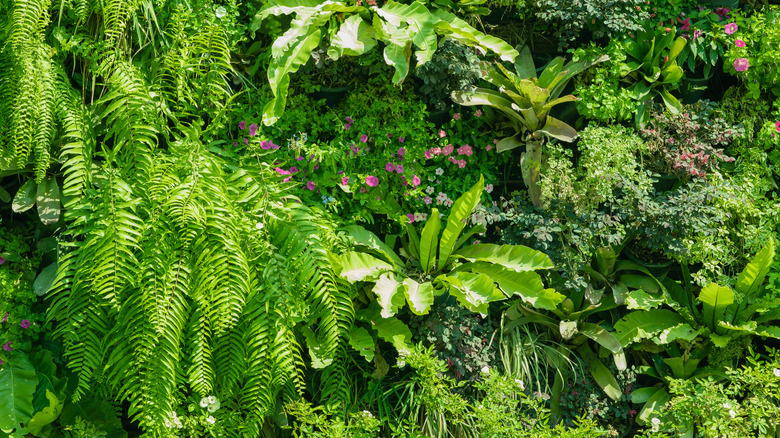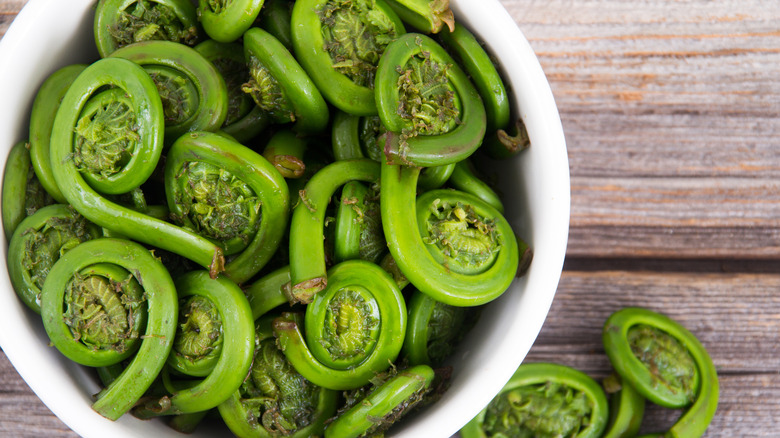The Common Garden Fern You Didn't Realize Could Be Harvested And Eaten
What's your favorite spring veggie to grow? For many gardeners, common produce such as carrots or asparagus makes the list. But among foragers, there's another beloved veggie that shows up in abundance every spring: fiddlehead ferns. These ferns can also be found in home gardens, and although they're primarily grown for their ornamental value, they're also delicious if harvested at the right time.
A fiddlehead is a young fern frond, named for its resemblance to the head of a violin. Almost all species of fern form fiddleheads, but most are toxic to at least some extent. Edible species include ostrich fern (Matteuccia struthiopteris), cinnamon fern, lady fern, and bracken fern. Of these, ostrich fern is the best choice since the other three can cause nausea, dizziness, or headache. Ostrich fern, on the other hand, is toxic only when raw, but it becomes delicious and safe to eat after it's thoroughly cooked. It tastes like a mix between asparagus, broccoli, and green bean, with a shape and texture that's all its own. It's rich in vitamins A and C, potassium, iron, antioxidants, and omega-3 fatty acids.
Ostrich ferns grow wild across the US in moist, shady areas, such as along waterways. Fiddleheads appear from April to early June, an exciting time for foragers. But you can also easily grow them at home (despite their aggressive nature being a downside of growing ostrich ferns in your garden). This provides easy access to a yummy spring delicacy while taking less of a toll on the wild fern population. Ostrich ferns have beautiful green fronds and are hardy in USDA zones 2 to 7.
How to grow and harvest ostrich ferns
Ostrich ferns work great as a border plant or as a ground cover that's perfect for shady areas with moist, fertile soil. They will also tolerate sun if kept moist and cool. You can buy starter plants from native plant nurseries. Test the soil first if you're planning to eat the fiddleheads because ferns can absorb heavy metals. They're easy plants to care for once planted, and in addition to being edible, they provide cover for wildlife and are resistant to deer. Cover the soil with mulch to help boost growth. The ferns will go dormant in the fall and come back each year; to control the spread, you can pot up the new plants and give them away.
In the spring, fiddleheads will appear at the center of the rosettes of existing ferns or pop up on their own. Harvest only those that are still curled tightly; closest to the ground is best. Don't harvest more than half of the fiddleheads from a fern plant.
Ostrich fern fiddleheads have a brown, papery layer on the outside, which should be removed first. Then, rinse them clean, and boil them until they're tender. You may need to change the water once since the water will turn dark with the initial boil. Undercooking ostrich ferns can cause food poisoning, while overcooked fiddleheads are mushy and unpleasant, so pay close attention as they cook. When they're ready, you have lots of options — they're delicious when sauteed simply, but you can also make soup, add them to stir-fries, pickle them, or even batter them.

